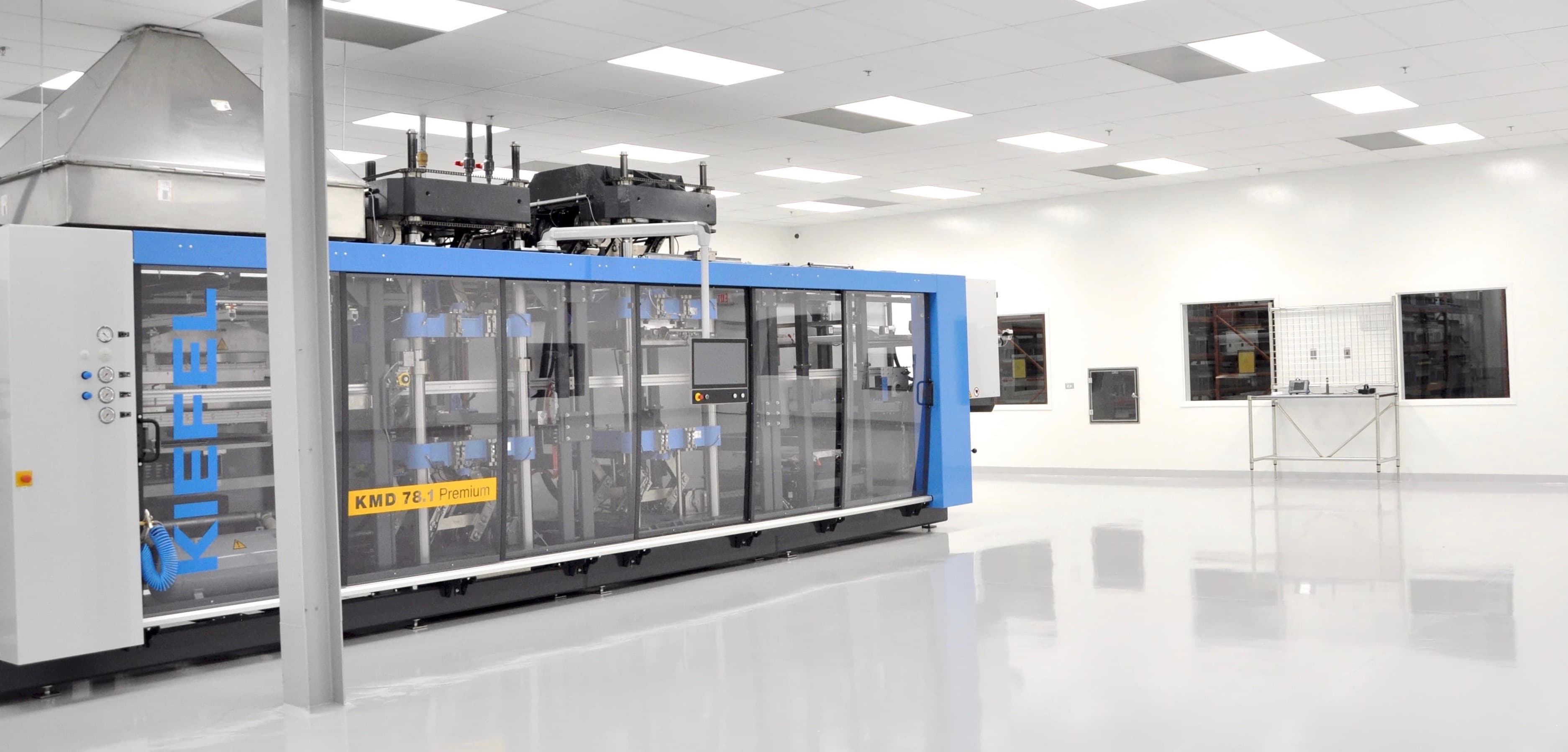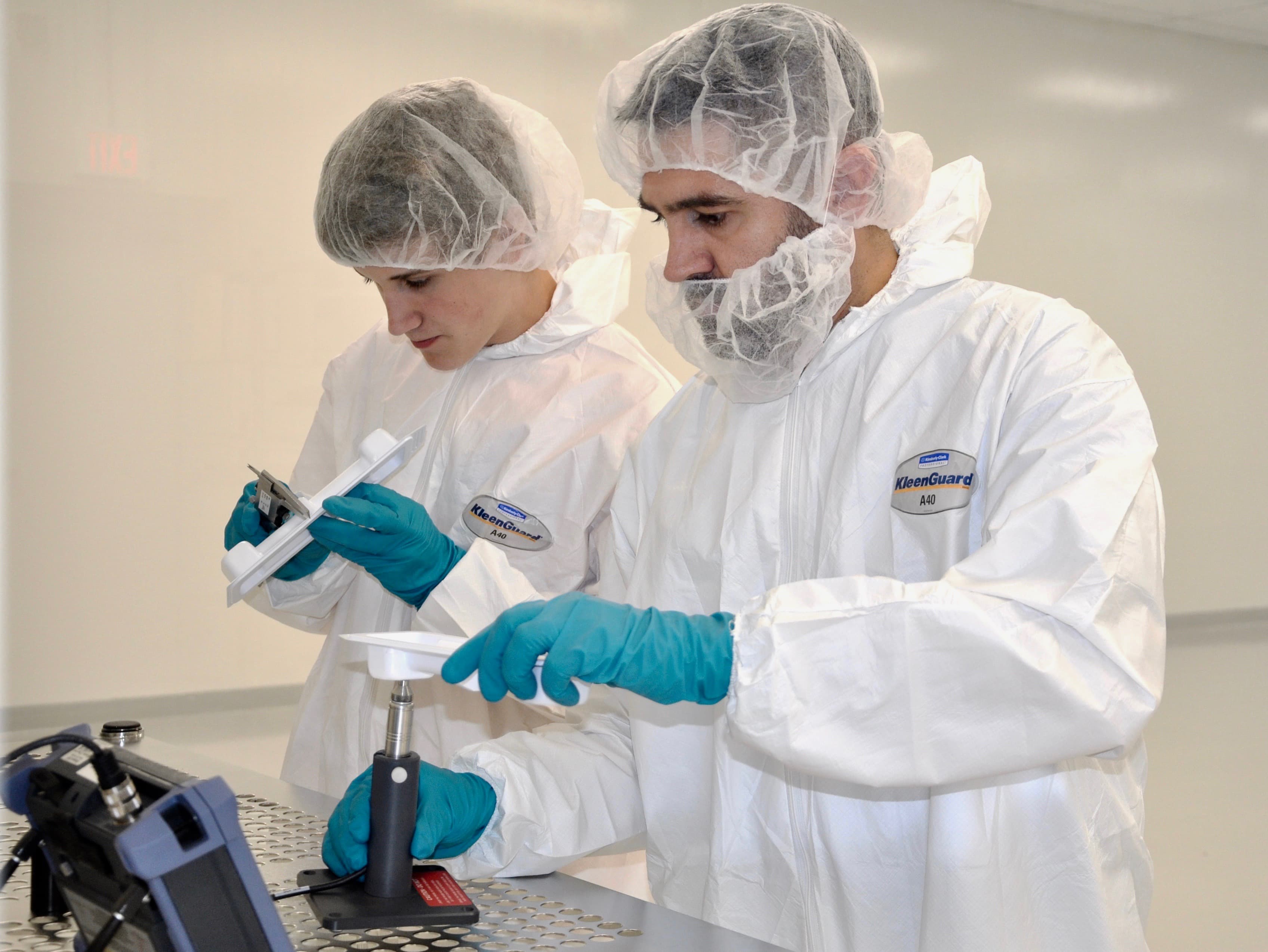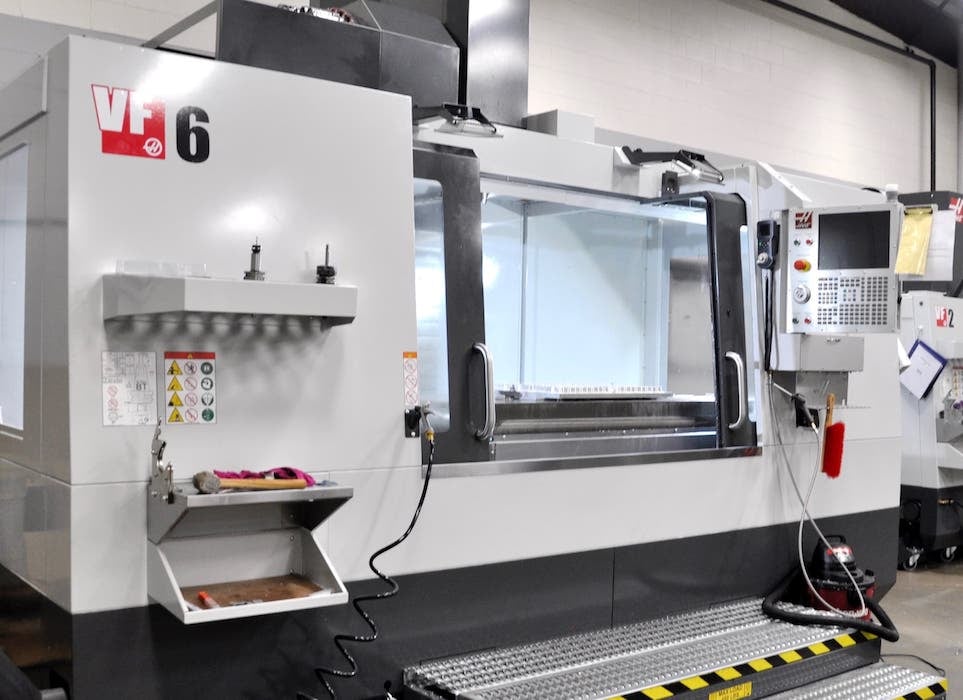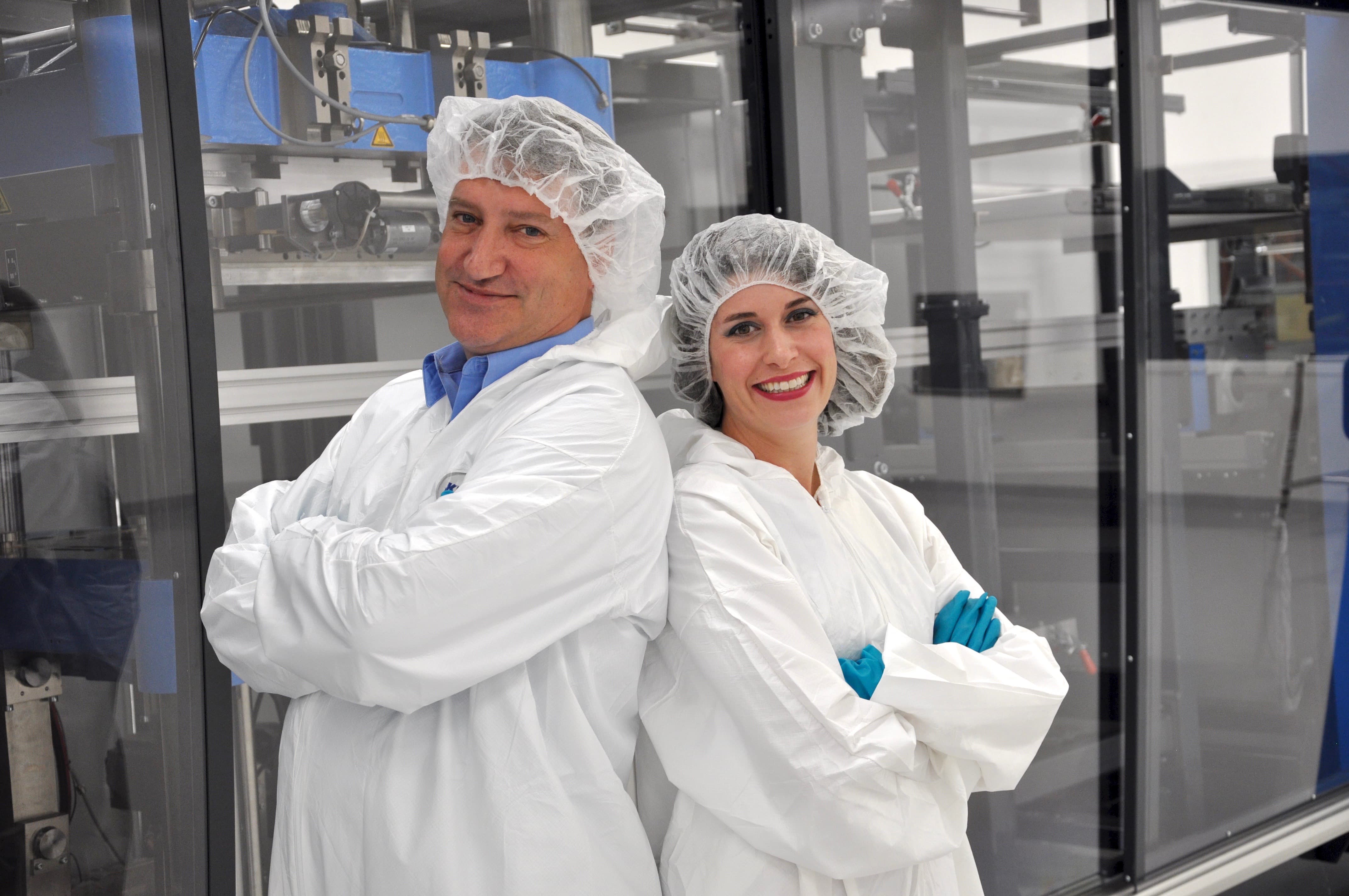Thermoformed medical packaging, like medical device trays, blisters, kits, and assembly trays, can be manufactured in a cleanroom or standard production facility. The main difference is that cleanrooms are sterile, controlled environments, where airborne particulate is monitored, and bio burden agents mitigated.
The cost of cleanroom medical packaging exceeds that of standard production packaging because one is investing in quantifiable assurance that the thermoformed package will meet the requirements for medical device safety and efficacy.
In order to provide a sterile environment for manufacturing medical packaging, investments in new equipment, materials and procedures must be made; understanding these helps provide guidance when deciding which manufacturing environment is appropriate for your medical device or product.
 Dordan's ISO class 8 cleanroom for thermoforming medical packaging
Dordan's ISO class 8 cleanroom for thermoforming medical packaging
Air filtration
Airborne particulate like skin cells, dust, lint, pollen, etc. is minimized in the cleanroom with a positive air flow design that pushes HEPA-filtered air into the cleanroom. Dordan’s air handler air filters are changed every three months to maintain the level of particulate specified by ISO’s Class 8 Cleanroom requirements. The surrounding spaces, a material handling and gowning room, have less air pressure than the cleanroom, ensuring that clean air always goes out and unfiltered air never goes in. Dordan conducts particulate counts in the cleanroom every week, tracking trends and confirming specifications are being met. On average, the level of particulate in Dordan’s cleanroom is on par with the particulate requirements of an ISO Class 7 cleanroom, even though it is only certified as a Class 8.
Cleaning
Cleanrooms combat the presence of microorganisms through strict cleaning procedures. Prior to every production run, Dordan performs a deep clean, which includes disinfecting the walls, ceiling, thermoforming machine, pass-throughs, and any other exposed surface. We clean every morning before the start of production and conclude each job with a post-production deep clean.
Sterilization
To maintain ISO Class 8 certification, Dordan enlists an outside provider to clean and sterilize the room via dry fogging, a process designed to produce small droplets that ensure even distribution of the disinfectant throughout the room. Before evaporating, these fine droplets bounce off hard surfaces, reducing condensation and metal corrosion. Once the cleanroom is fogged, swabs from different locations are taken that are sent to a lab to be incubated and analyzed. If there is no bacteria growth identified, the cleanroom is sterile and able to resume production. The entire cleanroom sterilization process takes about 7 days. Dordan’s most recent sterilization was April 26th, 2023 and no bioburden agents were detected
Cleanrooms also track humidity and temperature to confirm that the manufacturing environment meets the specs for a controlled environment. Humidity and temperature sensors are placed in Dordan’s cleanroom and readings are tracked, documented, and analyzed.
Gowning Room
To enter a cleanroom, one must wear the appropriate gowning garments. These include cleanroom suits, shoe covers, hair nets, gloves, etc. New protective clothing is provided to cleanroom personnel at the start of every shift.
Material Handling
Plastic material is brought into the material handling room, where it is prepped for entry to the cleanroom. Most FDA certified medical plastic is wound on plastic cores or is burnished, which eliminates the presence of fibers in the material handing room. This is contrary to non-medical plastic, which is wound on a compressed fiber composite core that has the potential to tear/shred. Medical certified materials reduce the potential for risk due to the high level of supply chain transparency.
Quality
Dordan’s cleanroom houses medical thermoforming machines that are specifically designed for producing high quality medical packaging. We are therefore able to maintain tighter tolerances on cleanroom produced parts than those manufactured in our standard production facility.
First article inspection validations are performed on every cleanroom job. Multiple thermoformed parts from each tool cavity are inspected, measured and analyzed for production part performance. These measurements are charted and tolerances established. This information is communicated to the customer via Dordan’s Final Production Part Drawing that can be used as a benchmark for incoming QC inspection.
PPAPs and full process capabilities studies provide more robust QC production data. Both tools for validating the production process strive to establish a CPK as a metric for assessing the performance of future production runs.
 Dordan's Quality Manager and Tech inspect medical device trays in Dordan's cleanroom
Dordan's Quality Manager and Tech inspect medical device trays in Dordan's cleanroom
Tooling
Cleanroom thermoform tooling far exceeds that of standard production tooling, because the high level of quality required for medical trays and packaging. Thermoform tooling is comprised of the form tool, water plate, pressure box, assist plugs, and cutting die. All components are designed, machined, and assembled on site at Dordan to a.0007” flatness, which allows for superb surface-to-surface contact that results in better cooling of the mold, faster cycle times, and more consistent parts. Syntactic foam assist plugs facilitate better material distribution throughout the part, and heated cutting dies minimize fiber hairs.
 CNC for machining thermoform tooling at Dordan
CNC for machining thermoform tooling at Dordan
Summary
Maintaining cleanroom sterility for thermoforming medical trays and packaging requires investments in resources that are not necessary when manufacturing packaging in a standard production facility.
In a standard production facility, the focus may be more on efficiency and cost-effectiveness, with less emphasis on the stringent requirements of medical device packaging. This can result in potential risks and compromises in terms of cleanliness and sterility. On the other hand, cleanroom medical packaging thermoformers prioritize maintaining a sterile environment by investing in specialized equipment, materials, and procedures. The cost of cleanroom produced medical packaging is consequently higher then standard production packaging, because it reduces the risk of contamination, ensuring the packaging meets the necessary standards for medical device safety and efficacy.
 My brother and Dordan GM, Aric, and myself, pose in front of our medical thermoforming machine
My brother and Dordan GM, Aric, and myself, pose in front of our medical thermoforming machine

